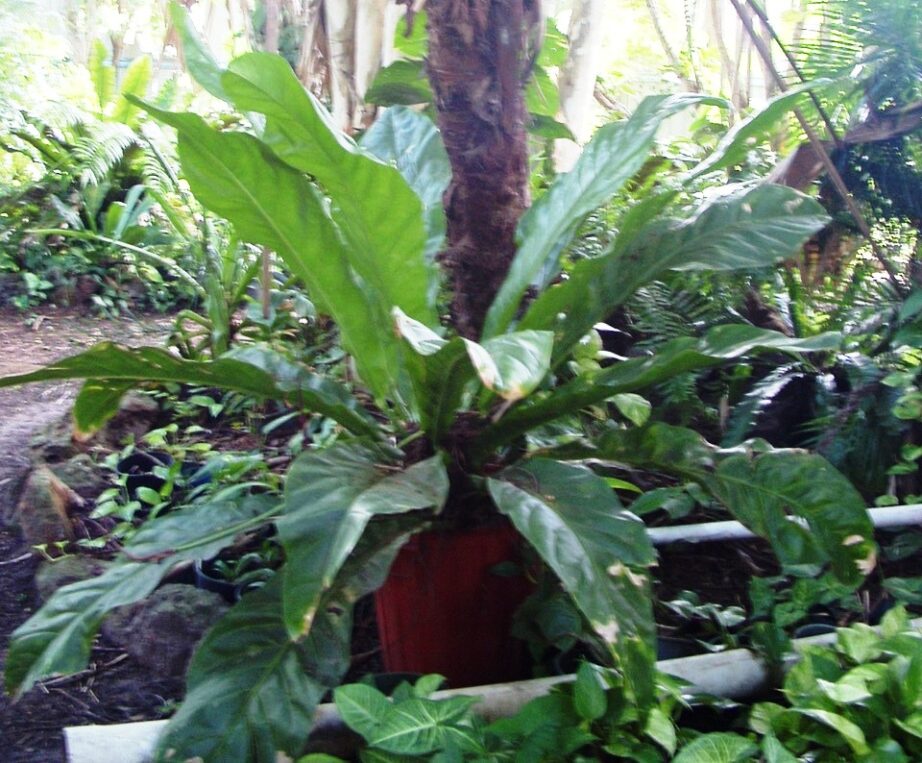ANTHURIUM CRENATUM KUNTH RARE JUNGLE PLANTS 4 SALE AUSTRALIA. Limited stock available, so be quick to secure yours now.
All these images I took of plants that I have had or have. ORIGINAL
My dear friend Michelle mastered the art of propagating these seeds & she controls the stock & I am guided by her professional advice on these plants.
Sorry for the high tech description in science lingo. See it for what it is. I sourced this reliable info from a global university for rare plants.
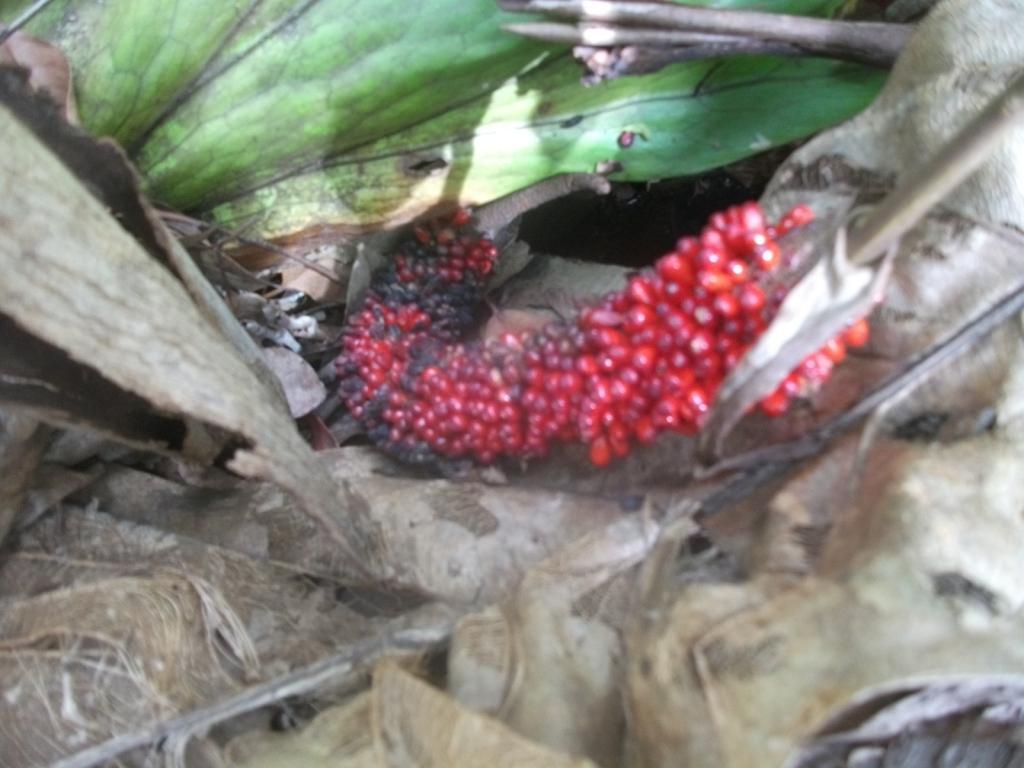
These extremely rare plants are available in 3 sizes.Large @ 900mm tall.Medium @ 700mm tall & small @ 200mm tall.These are the ones priced for sale herein @ $85 each plus pack/post of $22. Fresh seeds available only once a year around summer from 10 yr old plants
$10 per 10 seeds + Pack/Post charge for the order $4 . Ask before ordering.
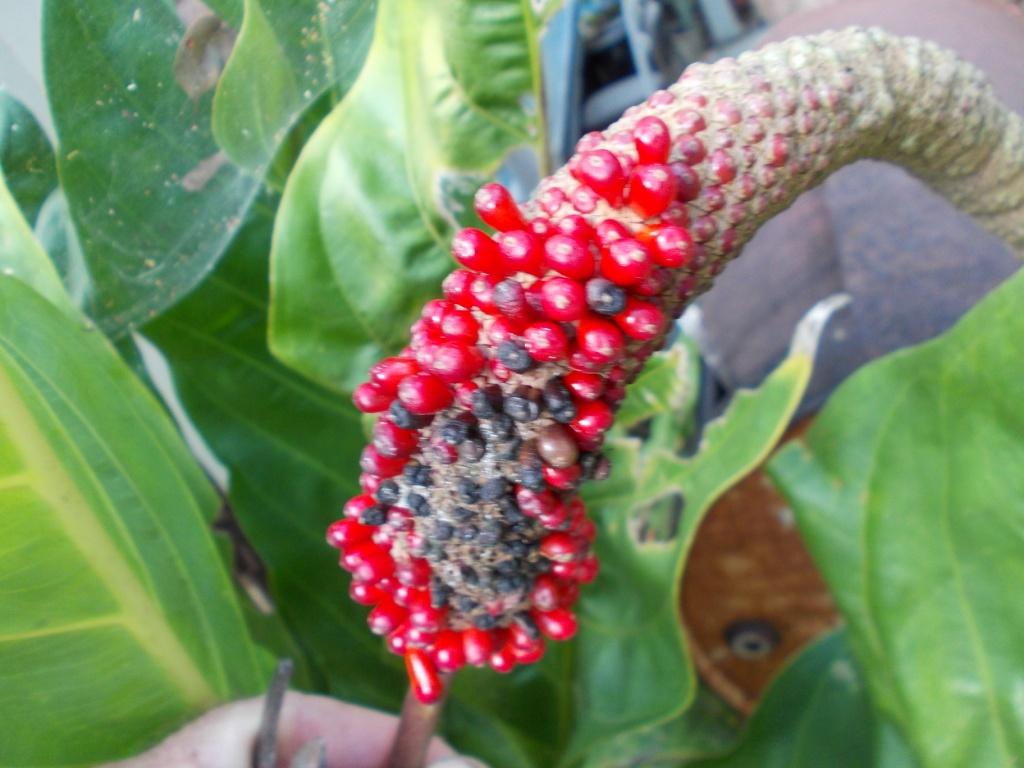
Epiphytic or epilithic, maybe forming dense clumps; stem to 9 cm long; roots little dense, spreading to descending, pale green pubescent, elongate, blunt, 3-4 mm diam.; cataphylls subcoriaceous, narrowly lanceolate, weakly 1–ribbed near apex, 9.5-13 cm long, narrowly acute at apex with a subapical apiculum, light green, drying reddish brown, persisting semi-intact, eventually deciduous.
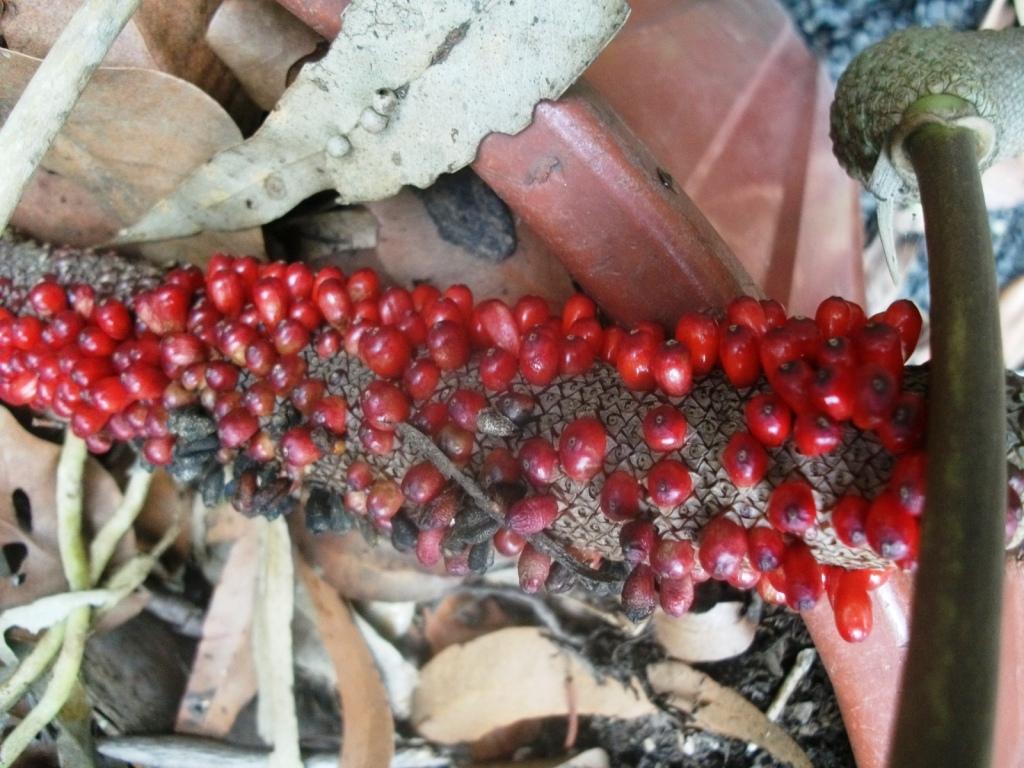
LEAVES erect to spreading; petioles 2.5-29.5 cm long, 4-17 mm diam., sharply to bluntly D-shaped, shallowly and broadly sulcate adaxially, the margins sharp but not raised, rounded to 3-ribbed abaxially.
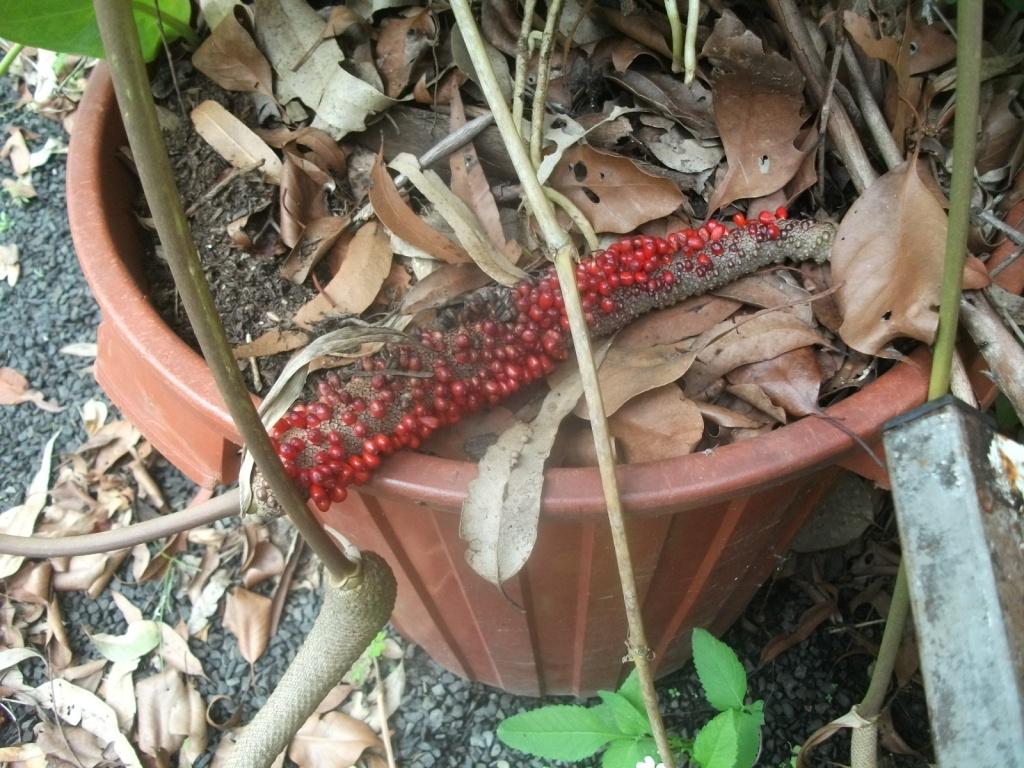
The surface weakly pale-speckled; geniculum slightly thicker and paler than petiole, 0.6-1.3 cm long; blades moderately coriaceous, broadly to narrowly oblanceolate or elliptic, sometimes ± oblong, acute to acuminate at apex (the acumen apiculate), acute (rarely weakly subcordate) at base, 23-100 cm long, 4-28 cm wide broadest near or above the middle.
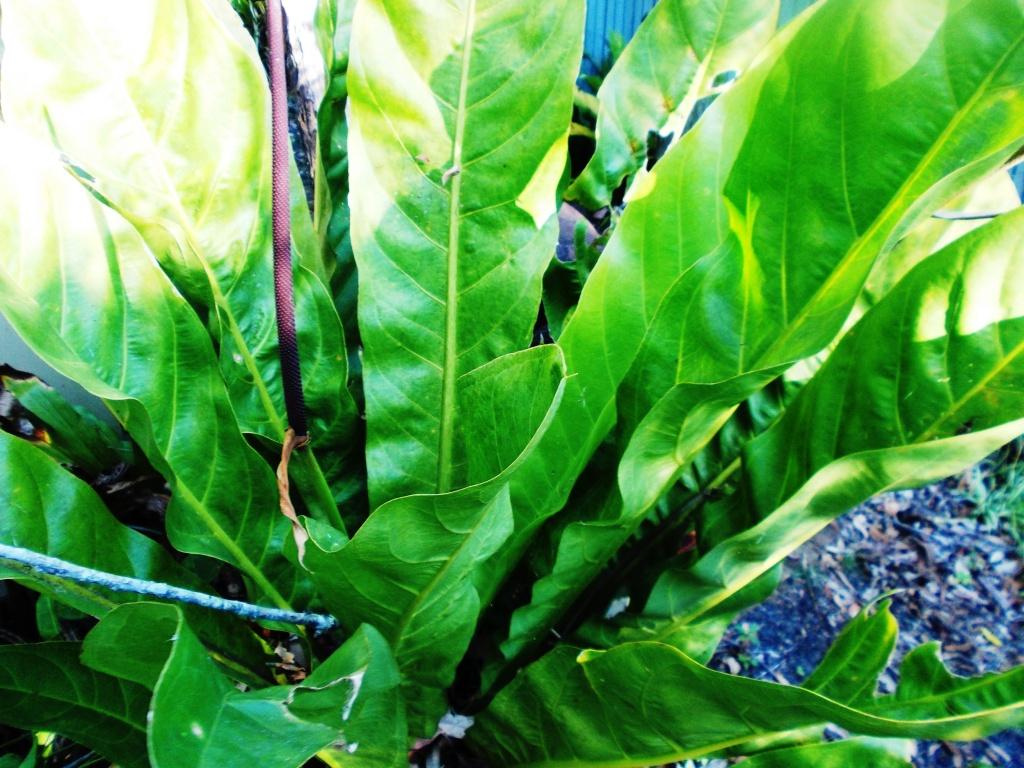
The margins sinuate to undulate; upper surface semiglossy, medium to dark green, lower surface weakly glossy to semiglossy, paler; midrib acutely angled at base, gradually becoming weakly sunken near the apex above, prominently higher than broad at base, becoming prominently convex toward the apex below, paler than surface; primary lateral veins 8-18 per side, departing midrib at (30)40-75° angle, ± straight to arcuate-ascending to the margin.
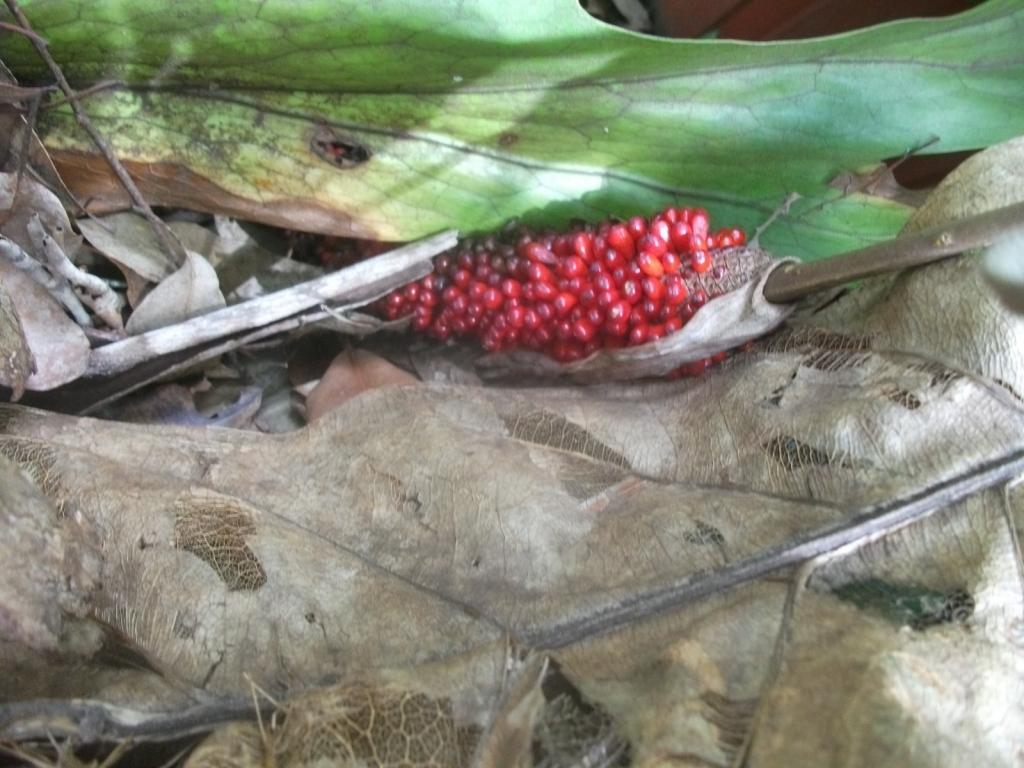
Raised above, convexly raised below; tertiary veins weakly raised above and below, darker than surface, drying prominently raised; reticulate veins weakly visible above, prominulous and slightly darker than surface below, conspicuously raised when dried; collective vein arising in the upper ? of the blade or absent, 5-12 mm from margin.
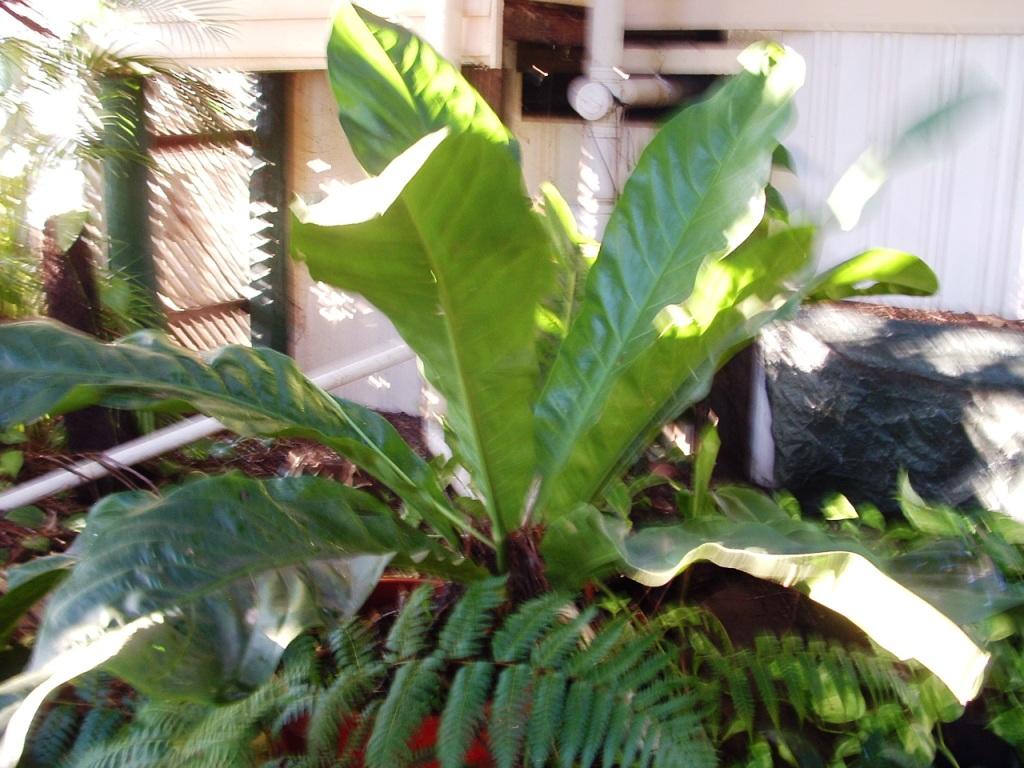
INFLORESCENCES erect to spreading or pendent; peduncle 19-72 cm long, 3-7 mm diam., l.6-14.4 x as long as petiole, green, terete to ellipsoid in cross section; spathe erect to spreading, subcoriaceous, sometimes flushed pink or maroon, usually light green (B & K yellow-green 7/10), linear-oblong, with the margins curled under, 4-14.5 cm long, 0.4-1.5 cm wide.
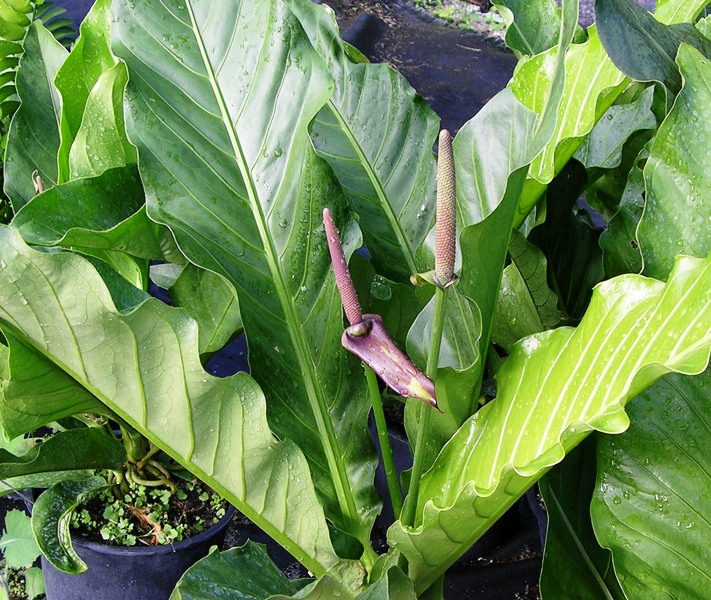
Acuminate at apex, obtuse to rounded at base; spadix reddish or purplish violet to maroon (dull, dark bluish purple fide S. Mayo, 1982), long-tapered, somewhat curved, 6.5-25 cm long, 3-8 mm diam. near base, 2.5-4 mm diam. near apex, broadest at the base.
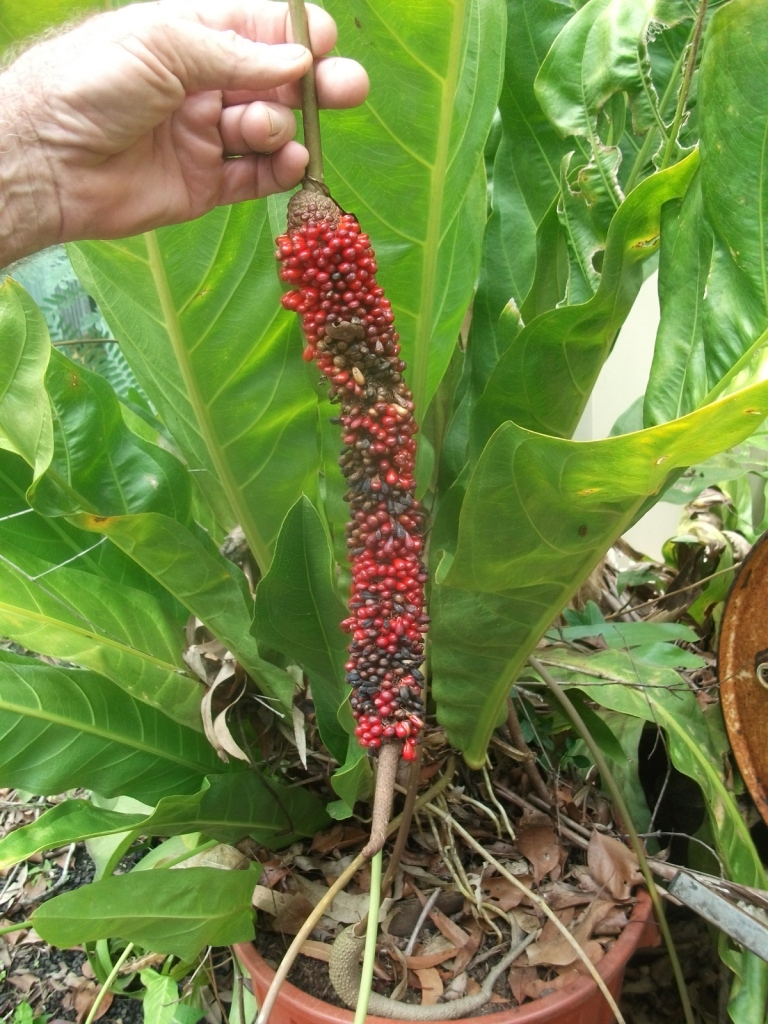
Flowers scented like rotting fruit prior to anthesis, rhombic to square, 1.5-3 mm long, 1.6-2.2 mm wide, the sides prominently and smoothly sigmoid; 5-8 flowers visible in principal spiral, 8-1 2 in alternate spiral; tepals matte to weakly glossy, densely, minutely papillate; lateral tepals 0.6-1.4 mm wide.
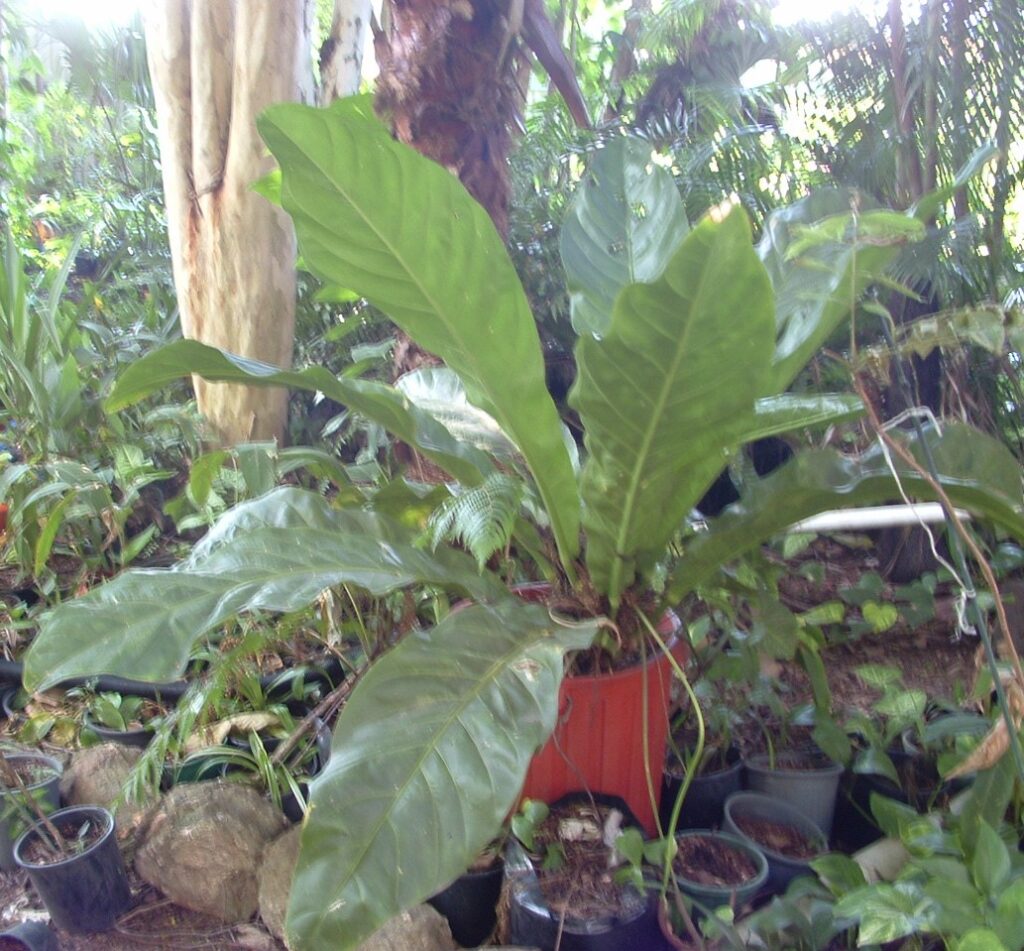
The inner margins straight to rounded, the outer margins 2-sided; pistils emergent 2-3.5 mm, glossy, green; stigma linear, 0.2-0.4 mm long, brushlike; stamens emerging in a slow, regular sequence from the base, the laterals preceding the alternates by 10 spirals; filaments translucent, broader than anthers, ca. 0.5 mm long; anthers 0.3-0.6 mm long, 0.5-0.8 mm wide.
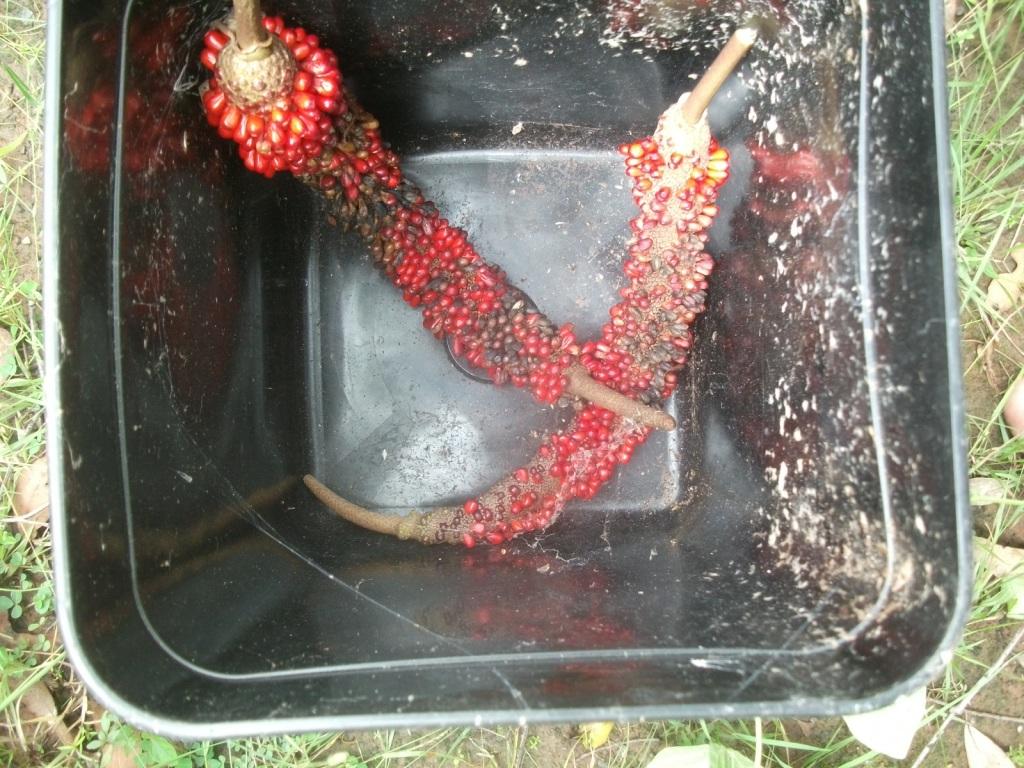
The caeoblong-ellipsoid to oblong-ovoid, weakly divaricate; pollen yellow-orange, fading to white (INFRUCTESCENCE spreading-pendent; spathe withered, usually deciduous; spadix to 2.5 cm diam.
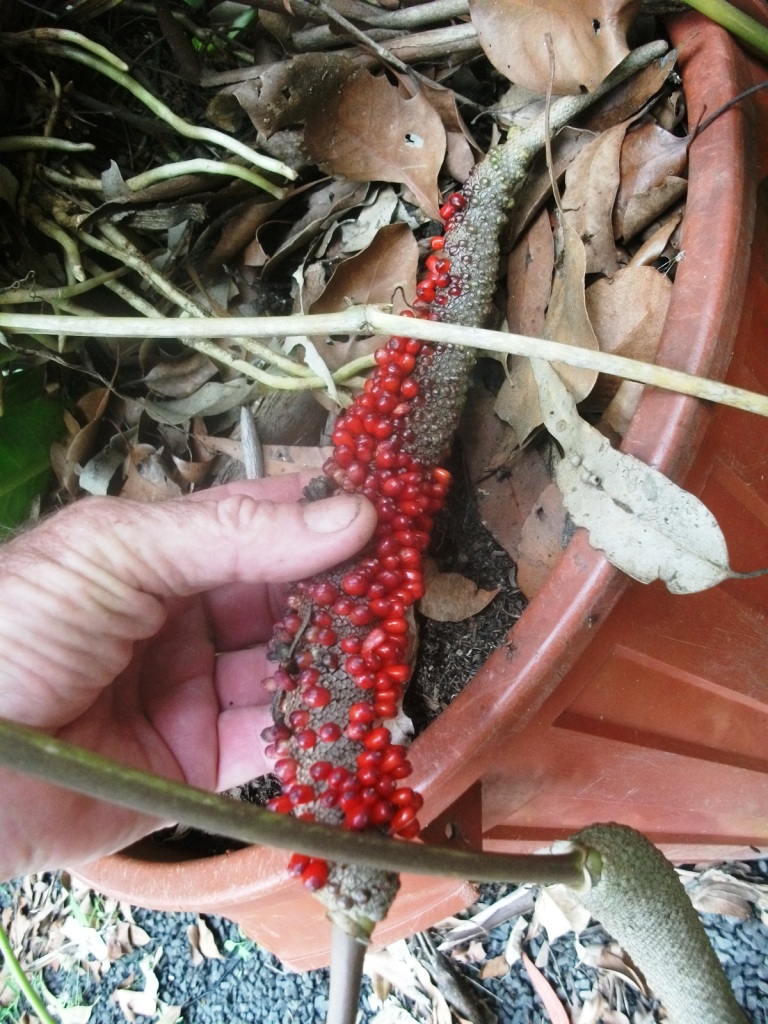
Berries bright red (B & K red 4/5), obovoid, glossy, 8-10 mm long, 5-6 mm diam.; mesocarp mealy, white, sweet, becoming acrid; seeds tan to pale yellow, oblong-elliptic, 3.8-6 mm long, 2-2.8 mm wide, 1.5-1.8 mm thick, with a short gelatinous appendage at apex.
Source: CATE Araceae. Images are original by owner/author.Henry Sapiecha
Habitat-It occurs principally in humid forests.
Larger specimen plants are at the Fraser Coast Qld & can be picked up or sent via courier
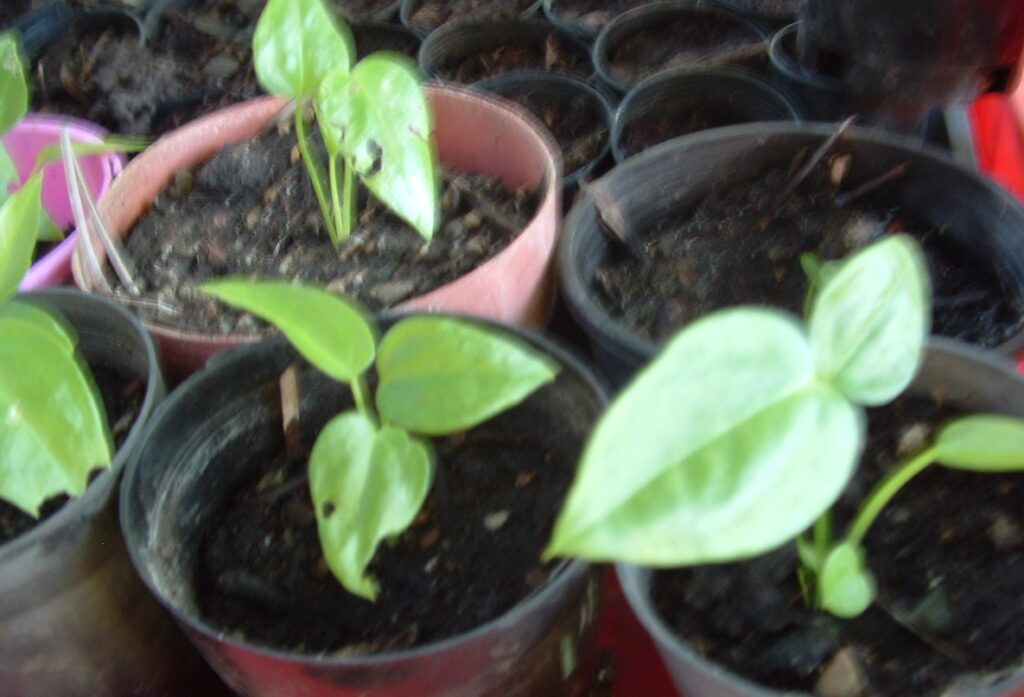
Henry Sapiecha
SITUATIONS CHANGE, SO ASK IF YOU WANT UPDATED STOCK INFO ETC
Any questions or if buying,delivering etc contact me HERE


